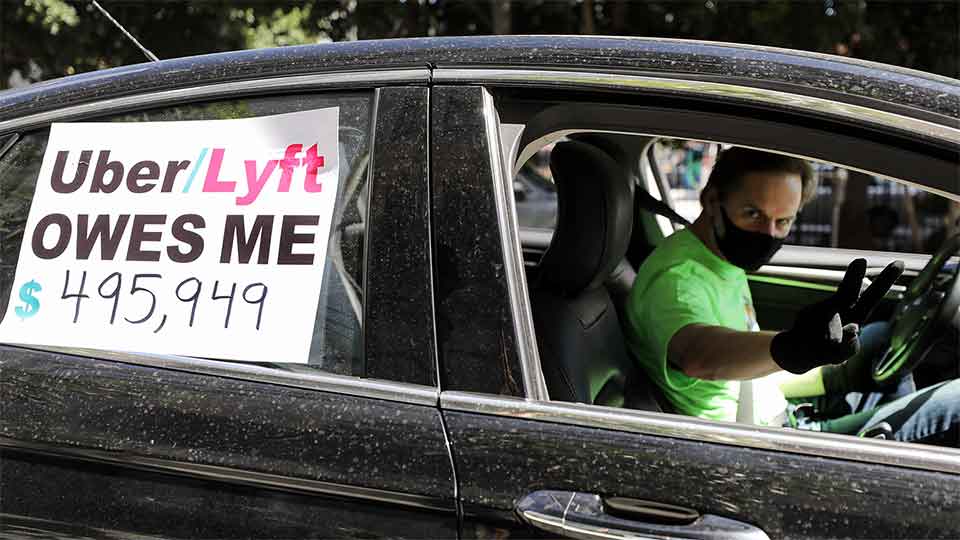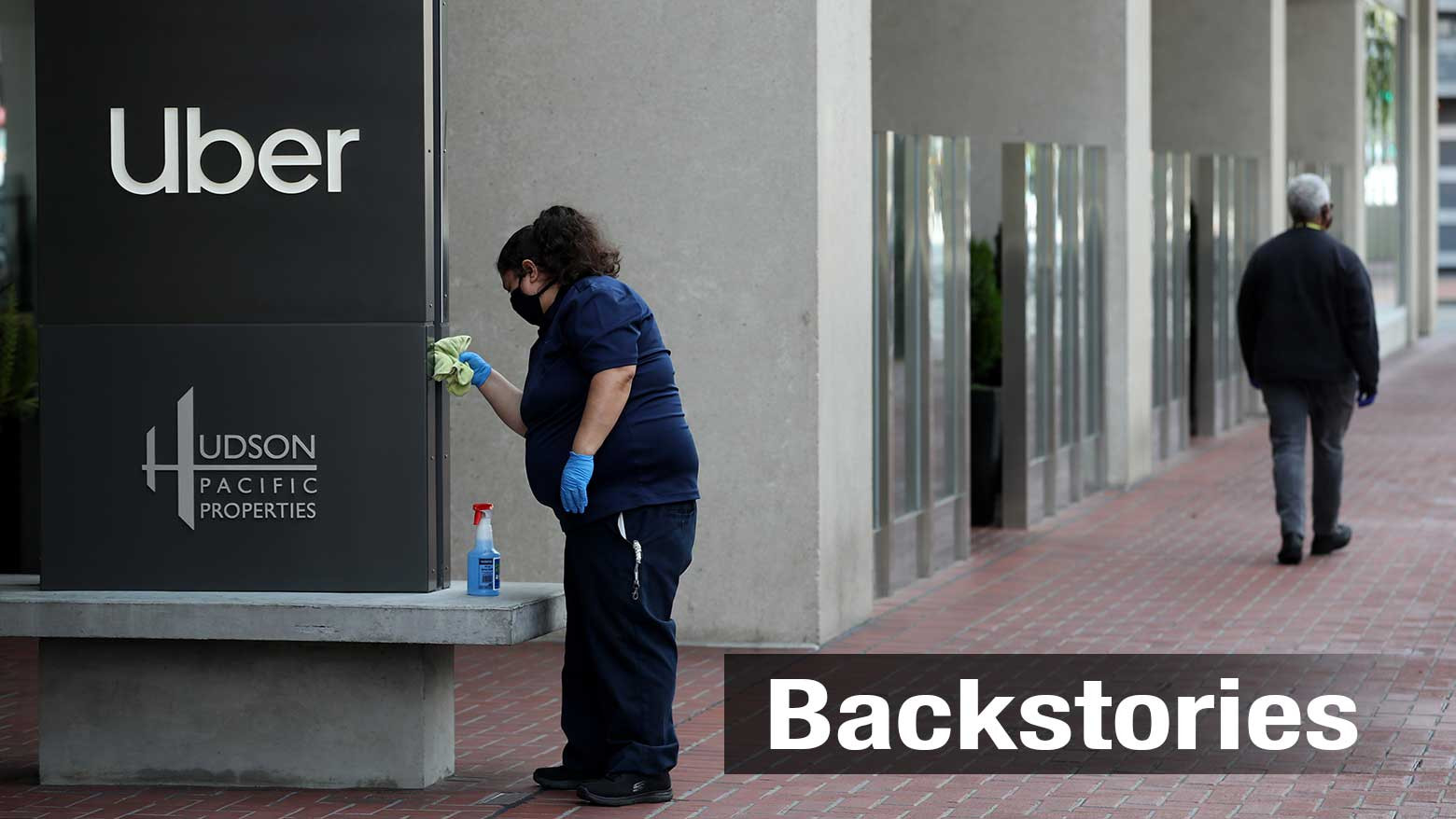Leopoldo has been driving for Uber on the side for three years but recently went full-time after two restaurants he worked for closed. Like most drivers, he has had a difficult time since the pandemic reached California. Government stay-at-home orders and business shutdowns have almost ground daily ridership to a halt.
“My first day full-time, I made $80,” says Leopoldo. “Very little, and that was for ten hours.”
It’s also been a rough three months for the company itself. Uber announced first quarter losses of $2.9 billion earlier in May, with CEO Dara Khosrowshahi saying the ride-hailing business had been particularly hard-hit.
“I won’t sugarcoat it,” Khosrowshahi said. “COVID-19 has had a dramatic impact on rides, with the business down about 80% globally.”
The disastrous Q1 results have forced the company to lay off 6,700 employees, or about 25% of its global workforce. It has also announced that it is closing some 40 offices around the world.
Court battle
Amid the pandemic, Uber also finds itself embroiled in a legal battle with California. The state has sued the company, along with rival ride-sharing app Lyft, for failing to comply with a new worker classification law.
“Californians who drive for Uber and Lyft lack basic worker protections,” said California Attorney General Xavier Becerra on May 4th, as he announced the state’s legal action against the companies. “Sometimes, it takes a pandemic to shake us into realizing what that really means and who suffers the consequences.”
Assembly Bill Five, which was signed into law six months ago, requires companies to classify so-called gig workers, like Uber and Lyft drivers, as full-time employees. The classification would entitle them to certain rights, such as minimum wage, disability insurance, overtime, and healthcare. Currently, drivers like Leopoldo, are treated as independent contractors, a classification which offers few protections.
The difference is a crucial one for Uber, which says it will contest the suit in court. If the company is forced to offer benefits to its California drivers, its prices in the state are expected to rise. And the lawsuit could raise questions about the viability of the ride-sharing business model in the rest of the country, if similar legislation is adopted elsewhere. In a sign of how seriously it’s taking the issue, Uber has pledged millions of dollars to a campaign in support of a ballot initiative that would exempt the company from the law.

But for now, Uber’s sights are set firmly on overcoming the pandemic. The company has announced a set of policies to combat the spread of the virus, including a requirement that both drivers and passengers wear face masks and take selfies to verify compliance.
As cities across the country start to reopen and more people return to the app, business will improve for drivers like Leopoldo. But the risk of infection will also increase.
“Are you worried about catching the virus,” I ask him.
“I am but what are you going to do,” he says, from behind a face mask. “I don’t want to fall behind on rent.”

